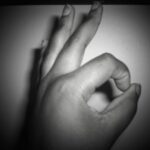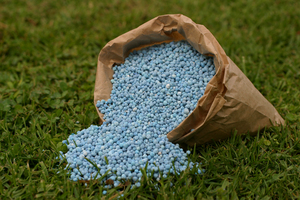When fishing, the type of fishing line you use directly affects your fishing experience. The test, quality, and strength of your line can be the difference between pulling in that monster and trekking back home empty handed. In “The Top 5 Brands of Fishing Line” I’ll take a look at the different lines I’ve used throughout the years, and advise you on how to tailor them to your specific fishing needs. Let’s get started!
Before we go over the different BRANDS of fishing line, we need to go over the different TYPES of line. One cannot fully understand the practical application of the fishing line without first learning about why the line was implemented in the first place.
Monofilament
DuPont was the first company to discover nylon. Within one year, DuPont was smart enough to start developing the first fishing line made entirely out of nylon. This revolutionized the fishing industry and led to what is now known as Stren. The monofilament line was lighter and boasted the same strength as previous fishing lines of the day. Stren remains the dominant force behind monofilament lines today!
Braided
Braided Dacron was the pinnacle of fishing line, up until Stren that is. braided Dacron isn’t as versatile is Stren, but some fisherman still prize it for catfishing. It’s inclusion in this list is somewhat of a formality, but If you’re primarily a catfisherman, you may love the traditional feel of braiden Dacron. Today, it’s used primarily for it’s softness, comfortability, and for backing on fly-reels.
Fluorocarbon
Fluorocarbon is nearly invisible underwater. I could go into the refractive index, but why? All that’s important is that it resists deterioration by common pond chemicals and sunlight, making it the most durable and translucent line to date. This is the definitive modern fishing line. It’s what most anglers use because it’s been proven to be a tiny bit more effective than the monofilament or braided dacron, but ultimately lines are tailored to fisherman. Not the other way around.
With the conclusion of the bried overview of fishing line TYPES, let’s now focus on fishing brands and why you should or shouldn’t use them. Every fisherman heads out looking to catch a certain type of fish, so why not outline them accordingly? The saying goes that there are a lot of fish in the sea. In order to prevent carpul tunnel, I’ll outline the most common catches. =)
Bass (Zebco):
- Test: 5-8 LB.
- Type: Monofilament
- Brand: Zebco
- Drag: Loose
Above are the common settings and equipment used by professional bass fisherman. Your line test should be set at 5-8 pounds. Traditionally, bass don’t grow big enough to merit a test above 8 pounds, and if you’re fishing in a privately owned pond you may want to stay in the 3-5 pound range. I recommend Zebco for all of your bass fishing endeavors for two reasons: It’s relatively cheap and of high quality. Zebco is the common fisherman’s line and should serve you well as long as you aren’t doing any fully professional fishing – or hooking snapping turtles!
Catfish (Spiderwire):
- Test: 14-25 LB.
- Type: Braided/Monofilament
- Brand: Spiderwire/Shakespeare
- Drag: Loose
The common settings for catfish are a lot like those of bass with a higher test. Again, it will depend on where you’re fishing, but your test should be set somwhere between 14 and 25 pounds. As catfish grow, they reach a certain threshold or “peak”. If they’re able to break past that weight mark, they’ll continually consume more and more of their habitat, allowing them to grow at rapid rates. I recommend Spiderwire because of it’s strength and flexibitily, but Shakespeare’s Red Cajun works equally well. Monofilament line is optimal for catfish as they can’t see very well and are typically bottom feeders. They won’t know the difference between lines at that depth, and combined with their lack of optical sense you’d be best to choose a line that feels comfortable and versatile rather than engineer it towards transparency. Spiderwire or Red Cajun is the best line for catfishing.
Bluegill (Stren)
- Test: 1-6 LB.
- Type: Fluorocarbon
- Brand: Stren/Trilene
- Drag: Tight/Medium
Bluegill are relatively the easiest fish to catch. You can be a bit more lax on the setting and equipment when fishing solely for bluegill. Unfortuntely bluegill rarely preside alone, but are usually in the company of small bass. I’ve engineered the setting above to be a crossover between bluegill fishing and bass fishing to maximize your results. When fishing for ONLY bluegill, you’ll want to use 1-4 LB test Stren, and set your drag to tight as they don’t fight much. If you’re fishing in a habitat that contains bluegill and bass, you’ll want your Trilene at 2-7 pound test, with a medium drag. Honestly, I’d be remiss If I told you to exclusively use one or the other. Try them out and see which “feels” best for you. For all intents and purposes on bluegill fishing, Stren and Trilene will yield the same results.
So now we’re done. We’ve taken a look at different TYPES of fishing line, common BRANDS and what they’re typically used for and how to make the most out of your fishing experience. I hope you’ve enjoyed your visit. Now go out and catch some fish!



